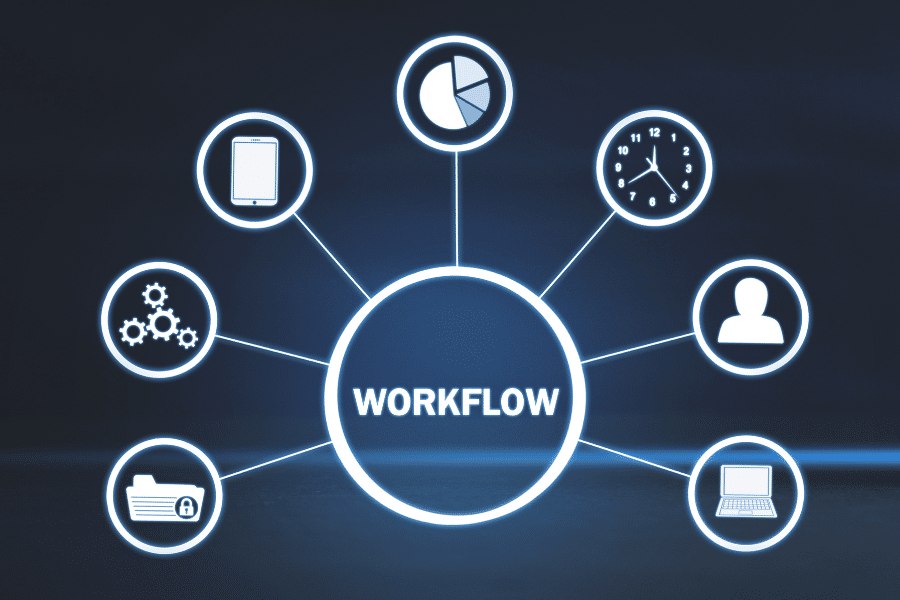Legal teams embedded within organisations are expected to respond swiftly, manage risk effectively and support business goals, all while handling an ever-expanding range of requests. One of the most challenging areas to manage is intake: the front door to legal support. If intake isn’t well-structured, legal work becomes reactive, unevenly distributed, and difficult to track.
A well-designed intake workflow helps legal teams to filter, prioritise and allocate matters appropriately. It brings order to chaos, enabling better resource utilisation and clearer oversight of risk and workload.
This article explores how legal departments can streamline intake processes, minimise administrative burdens, and foster enhanced business engagement.
Establish one way in
Legal requests can arrive in unpredictable ways, such as via email, direct messages, calls, or being dropped into conversations. This fragmentation creates risk. It makes work difficult to prioritise and can leave teams operating with incomplete information.
Routing all requests through a centralised intake channel is a simple but powerful fix. Whether it’s an online form or an integrated platform, a single point of entry ensures consistency and visibility. It also sets expectations with the business around how to engage legal.
Standardisation means legal teams receive the same information every time. By incorporating logical structure, such as presenting different questions based on the type of request, the quality of information improves. As a result, matters can be triaged more effectively and handled with fewer back-and-forth exchanges.
Having said that, there will be occasions where you’ll need to manage by exception – you won’t expect the CEO to complete a form! So ensure your process allows flexibility for these scenarios.
Categorise early, triage smartly
Without classification, it’s easy for low-risk queries to displace high-impact matters. An efficient intake system includes a straightforward triage process that categorises requests by risk, urgency and complexity.
This enables legal teams to focus on strategic work while maintaining control over routine activities. Built-in triage rules can automate some of this sorting, ensuring that high-priority work is flagged early and straightforward tasks are handled with minimal intervention.
Triage should also support decision-making on whether a request can be redirected, delayed, or managed through alternative routes, including self-service or automation.
Introduce self-service options
Many legal requests are routine and repetitive, including non-disclosure agreements (NDAs) and low risk procurement agreements. Allowing the business to manage and resolve these independently, within a controlled framework, can significantly ease the burden on the legal function.
By integrating self-service into the intake process, users can access templates or automated workflows based on the type of request. For example, if someone submits a low-risk contract request, they might be provisioned with a document completed using set inputs (leveraging document automation) or a pre-approved document template, rather than creating a new matter for legal.
This approach reduces the volume of legal requests and ensures that lawyers focus their time on where they add the most value.
Prioritise and allocate intentionally
During triage, requests must be allocated. But workload imbalances are common. Without a system to support visibility and fair distribution, some lawyers become overburdened while others are underutilised.
Legal teams benefit from tools that map requests to lawyers based on current workload, expertise or area of focus. Allocation decisions become more data-driven and less reactive. This also supports long-term team wellbeing and reduces the risk of bottlenecks forming around specific individuals.
Where internal capacity is stretched, routing some matters to external counsel can be built into the allocation logic, ensuring nothing gets stuck waiting for availability.
Maintain oversight and adapt
Even the best-designed workflow needs regular tuning. Legal demands fluctuate, business expectations shift, and team structures evolve. Ongoing oversight is essential.
Dashboards that display matter volume, status, and lawyer workload provide legal operations teams with the insight they need to manage intake dynamically. Where matters are routinely delayed or escalated, workflow inefficiencies or resource gaps may arise, requiring attention.
Reviewing intake data helps identify trends, such as departments generating frequent legal queries or common types of repeat work. This intelligence supports broader legal operations goals, including resourcing strategies, policy updates and training needs.
Keep communication clear
Once a legal request is submitted, many business users are left in the dark. This lack of visibility can lead to frustration, unnecessary follow-ups and erosion of trust.
An effective intake process includes regular status updates, clear contact points and feedback mechanisms. Requesters should be able to see where their matter sits, who is responsible and when they can expect a response. This transparency helps the legal team be seen as accessible and reliable, without increasing the administrative burden.
Connect intake to the bigger picture
Intake is most effective when it forms part of an integrated legal operations system. When connected to matter management, document automation, workflow tools and reporting dashboards, intake becomes the first step in a seamless end-to-end process.
Legal teams can design workflows that automate everyday tasks, flag risks, track performance, and allocate work in real-time. With the right platform, updates to workflows can be made quickly to reflect changing priorities or team structures.
By integrating intake into the broader legal operations framework, teams gain not just efficiency but also control, foresight, and the ability to scale support without increasing headcount.
Conclusion
Managing legal intake well isn’t just about streamlining requests. It’s a foundation for how legal engages the business, prioritises its time and delivers value. With a centralised approach, smart triage and the right tools in place, legal teams can take command of their workload and meet rising expectations with confidence.
This article was originally published on our sister site lawcadia.com.

